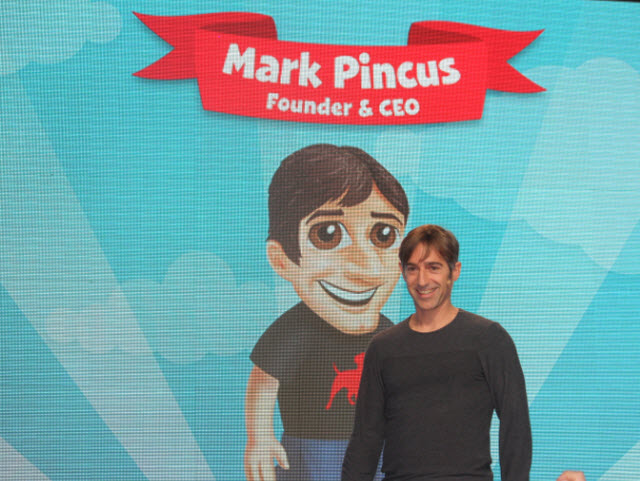A turning point: Real game designers
Tim Chang, then a venture capitalist at Norwest Venture Partners, said in the fall of 2009, “It’s hard to tell for now what the real churn rate will be. Social games have churn rates. You have a hole in the bottom of the boat, but the boat is moving so fast that you don’t see it taking on water.”
Zynga discovered that while it had a huge hit with FarmVille, the challenge was to keep it going and to come out with new games that made up for the users that it lost each week as players tired of older games. It learned that while it could add millions of players in a week, its launches could go even smoother.
It added an office in India in part because it wanted its employees to be able to go home for the evening and hand off their monitoring responsibilities to someone else during a big game launch.
That kind of move was very important for a large and growing game company, given what had happened earlier with Electronic Arts. EA had earned a reputation for putting its workers through “crunch time” so often that it got hit with an employee revolt, started by a woman who called herself “EA Spouse.” Later revealed as Erin Hoffman, EA Spouse spoke up on behalf of all of the overworked EA employees. A full-fledged investigation ensued, the whole industry went into a phase of introspection, and EA had to deal with lawsuits and was forced to ease up on the throttle.
Zynga was vulnerable to the same problem because the company was shipping new code for its games on a daily basis. Opening an India office was an attempt to forestall a revolt.
As Zynga bulked up, it also realized it needed to get more talent for making games on board. And as it hired more and more veterans of the video game industry, Zynga got more and more respect. Interestingly, even Hoffman eventually went to work at Zynga.
Brian Reynolds was one reason for Zynga’s growing respect. Reynolds was an old-school game developer, trained by game industry legend Sid Meier in the creation of games such as Sid Meier’s Civilization, Civilization II, Sid Meier’s Gettysburg, Sid Meier’s Alpha Centauri and others. In 2000, he left Meier’s company to become chief executive of Big Huge Games, which went on to create the Rise of Nations real-time strategy game. The company was acquired by THQ in 2008.
Bing Gordon introduced Reynolds to Mark Pincus, who knew his name because he loved playing real-time strategy games with his nephews when he was younger.
“That is how Brian Reynolds got here, because Mark was a Rise of Nations fan,” Gordon said in an interview in the fall of 2010.
Reynolds joined Zynga on June 30, 2009, with the aim of starting Zynga East, a new game studio based in Baltimore, Md. He became Zynga’s chief game designer and recruited many of his former colleagues to create a full-fledged game development studio.
“My job is to see what good game design techniques I can bring to bear on social games and to do new, innovative stuff,” Reynolds said.
Reynolds helped Zynga rehabilitate its image among game designers. In February, 2010, Reynolds gave a talk about Zynga’s practices at the annual Dice Summit, an exclusive gathering of game developers in Las Vegas. At that time, Zynga had six of the top 10 games on Facebook and had more than 239 million monthly active users. FarmVille alone had more than 79 million users. Reynolds commanded a lot of respect among game developers and he put a friendly face on Zynga. At that same conference, Zynga’s Mark Skaggs (pictured right in red) collected the award for Best Social Game.
Reynolds could talk to the crowd in terms of game play and the motivations of gamers — topics that they could relate to. He described how social games worked. He said that shame was a good motivator to get people coming back to games like FarmVille, since you didn’t want your friends to catch your farm looking run-down.
“Welcome to the web,” Reynolds said. “The whole game is sitting on servers in a room. You have control of the entire game at all times. The metrics are available in real-time.”
Reynolds said that it made no sense to mindlessly port game franchises from the consoles to the new social platforms without designing something that worked especially well with Facebook users. This sort of talk was helpful to game developers who wanted to cash in on the social gaming gold rush. But for Zynga, trotting out someone like Reynolds was a powerful expression of its respectability and an equally powerful recruiting tool. Reynolds made the rounds at the conferences, but he didn’t reveal what he was working on until much later. He said he believed that console games and social games would coexist, and that social wasn’t a threat to core games.
The ideas that Reynolds learned from legendary game designer Sid Meier still apply at Zynga, he said. Meier liked to build a prototype as quickly as possible, then improve it based on what users do, and it’s the same at Zynga. At the same time, in both traditional design and social design, it’s important not to overvalue with users say they want. In the case of the Civilization games, for example, if the designers followed every player request, the games would have become overloaded with features and forced players to micromanage the game in a way that became tedious.
After Reynolds joined, so would a number of other famous game creators. Steve Chiang joined in the spring of 2010 to become head of the company’s game studios. Other star developers who joined were Louis Castle (who recently left), a former Electronic Arts and Westwood Studios veteran, and Bruce Shelley, who became a consultant for Zynga after Microsoft shut down his own Ensemble Studios, which made the Age of Empires games.
The “Cuban Missile Crisis” with Facebook
 FarmVille showed the power of viral marketing, where Zynga could cross-promote its games across its network and turn new games into instant hits. But Facebook users began to complain that they were getting too many spam messages from other Facebook users who were playing games. Facebook cracked down on the game spam, shutting down game notifications that were sent into the main news feed of Facebook users. Facebook also limited other forms of viral communication on its platform.
FarmVille showed the power of viral marketing, where Zynga could cross-promote its games across its network and turn new games into instant hits. But Facebook users began to complain that they were getting too many spam messages from other Facebook users who were playing games. Facebook cracked down on the game spam, shutting down game notifications that were sent into the main news feed of Facebook users. Facebook also limited other forms of viral communication on its platform.
The upshot was that Facebook got fewer complaints from users about the game spam, but the usage of game apps dropped dramatically. Suddenly, in the spring of 2010, Zynga was losing tens of millions of users. One of the results was that app makers who previously didn’t have to advertise now had to do so, and the ad revenue went straight into the pocket of Facebook. Zynga effectively had to start paying Facebook more money. At this point, in Facebook’s “post-viral era,” the business models for Facebook game companies weren’t looking so good, and venture capitalists started funding more mobile game companies.
Then another shoe dropped. Facebook came to Zynga and said that it would require the company to use its new Facebook Credits virtual currency as the sole virtual money for transactions involving Facebook games. Facebook would get a 30 percent cut of the virtual goods transactions. Some saw this as an inevitable move by a platform owner to set up a tax. The 30 percent was the same cut that Apple took for apps sold on its App Store, and it was what Microsoft took as its share of Xbox Live online game sales.
Facebook’s Deborah Liu argued that the introduction of a universal currency would be much like the impact of the euro currency in Europe. That allowed people to use the same currency in different countries, and with Facebook Credits, users would be able to use the same Credits currency across all Facebook apps. Facebook contended this would give gamers more liquidity and incentive to spend money across a lot of apps. It would also make it easy to do international transactions.
But the 30 percent fee didn’t go over well, given that Zynga was used to paying just ten percent to other virtual currency providers on Facebook. On May 7, news broke that Zynga was preparing to launch a web site dubbed Zynga Live that would serve as a portal for its own social games. Mark Pincus called an all-hands meeting to tell his staff about the plans, underscoring the tension with Facebook over Facebook Credits. The tension in the meeting was palpable.
“When you operate on someone’s platform, it’s a continuous crisis,” said one former Zynga insider. “We were adolescents growing up together. Facebook didn’t know its own strength, and we didn’t know how to behave. Facebook was worried they were getting too dependent on us. It was like growing up with a best friend. You get into a fight.”
Zynga went so far as to create FarmVille.com and was planning to launch Zynga Live, a web site that would have taken Zynga’s game to a Zynga-owned network. To some in the industry, Facebook’s moves were necessary for Facebook to establish a viable business model built around ads and Facebook Credits. Zynga’s moves made sense as well. If it was ever going to go public, it had to diversify away from Facebook.
But the showdown was a kind of brinksmanship that threatened to destroy both companies. For Facebook, Zynga was the goose that laid the golden egg, keeping Facebook members on the site. And for Zynga, Facebook was an indispensable market, providing access to millions of potential players.
In a speech given during the time, Pincus warned Facebook to focus on what it did best: the plumbing of the social platform.
“Facebook is at a crossroads,” said Pincus. “They have to decide whether its more important to be the web’s social platform, to make their social plumbing pervasive,” presumably through an expansion of more open technologies and communications infrastructure such as Facebook Connect. “It’s sort of like being the plumber for the online world. If I were them, my goal would be to be the social platform. They have to decide to be the plumbing or the portal. I hope they find the business model around the plumbing.”
He added, “Where this ought to go is it should be an open Xbox Live for the web. If we get to this place where there are achievements, a consistent user experience, a way for web publishers and networks and sites to participate, and an easy way for developers to develop amazing game experiences that enhance relationships among people, then I think social gaming can end up being the few real consumer experiences on the web and be a massively large business for all of us.”



